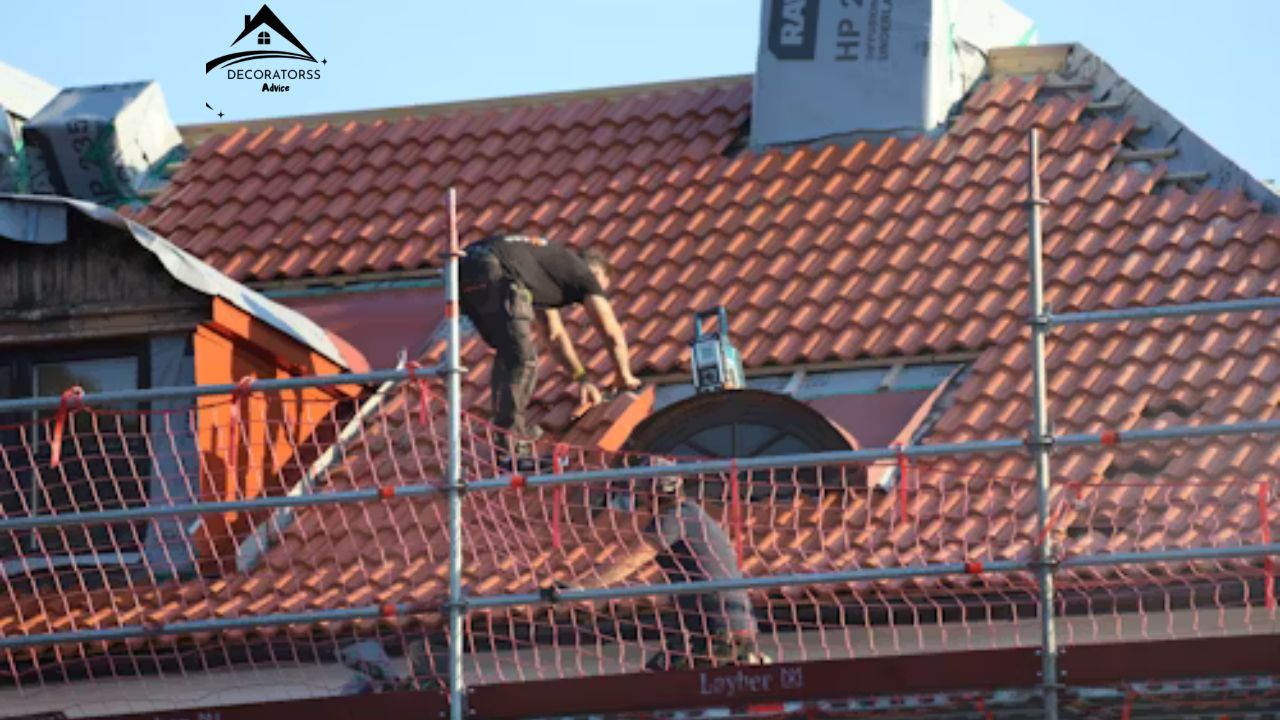When it comes to protecting your home, nothing works harder than your roof. But have you ever wondered who makes sure every shingle, nail, and ridge cap is done right? That’s where a roofing cop comes in. Think of a roofing cop as the guardian of your roof — the person (or team) who ensures that everything from materials to installation follows the right standards. Just like a police officer protects the streets, a roofing cop protects your home from leaks, damage, and poor workmanship.
Let’s dive deep into the different types and roles of a roofing cop, understand what materials they handle, and explore how they keep roofs in top shape all year round.
1. The Main Role of a Roofing Cop
A roofing cop has one key job — to make sure your roof stays strong, safe, and long-lasting. Their work combines inspection, supervision, and enforcement of roofing standards. Imagine them as a mix between a detective, a builder, and a teacher.
They look for things most people would never notice — small cracks, loose flashing, or uneven shingles that could turn into expensive problems later. The roofing cop checks materials, tools, and even the workmanship of roofing crews to ensure every inch of your roof meets safety codes.
Their duties often include:
- Inspecting new and existing roofs for damage or defects
- Ensuring correct installation techniques
- Checking material quality and durability
- Supervising roof maintenance schedules
- Ensuring compliance with local building codes
When a roofing cop does their job right, you get a roof that’s weatherproof, energy-efficient, and built to last decades.
2. Types of Roofing Cops
Just like there are different types of law enforcement officers, there are different types of roofing cops too. Each one plays a unique role in ensuring roof quality and safety. Let’s look at the main types:
a. Residential Roofing Cop
A residential roofing cop focuses on homes and small buildings. They check everything from asphalt shingles to clay tiles, ensuring proper sealing and ventilation. These are the people who protect family homes from leaks, drafts, and structural issues.
They also help homeowners understand roof maintenance schedules and the importance of regular inspections. A roofing cop in this category might even recommend energy-efficient options like cool roofs or solar-integrated shingles.
b. Commercial Roofing Cop
For bigger structures like warehouses, malls, and office buildings, a commercial roofing cop steps in. Their expertise includes flat or low-slope roofing systems, such as TPO, EPDM, and PVC. They check drainage systems, roof load capacity, and insulation layers to ensure that the building remains safe and functional year-round.
This kind of roofing cop often collaborates with engineers and architects to approve plans and monitor ongoing construction.
c. Roofing Material Cop
A roofing cop who focuses on materials is like a quality control expert. They inspect the raw materials — tiles, shingles, flashing, sealants — before they even make it to the job site. Their goal is to ensure every product meets required durability and performance standards.
These specialists might work with manufacturers or government bodies to certify materials before they hit the market.
d. Safety & Compliance Roofing Cop
This type of roofing cop ensures that every project follows occupational safety and local building laws. From checking that workers use harnesses to confirming that the slope angle follows regulations, they make sure everything aligns with legal safety requirements.
If something doesn’t meet the rules, they have the authority to stop work and demand corrections — just like a real cop writing a ticket for breaking the law!
e. Roofing Maintenance Cop
A maintenance roofing cop focuses on the long-term care of roofs. They monitor weather-related damage, moss growth, and drainage issues. Regular checkups by this roofing cop can extend a roof’s life by years and save thousands in repair costs.
3. Different Materials Roofing Cops Deal With
Roofing materials vary widely, and a roofing cop needs to know how to handle each type. Let’s look at the most common ones and what makes them special:
a. Asphalt Shingles
The most common roofing material in residential buildings. A roofing cop checks for correct alignment, nail placement, and weather sealing. Even a small mistake can lead to leaks or missing shingles after a storm.
b. Metal Roofing
From aluminum to copper, metal roofs are becoming more popular. A roofing cop ensures panels are properly fastened, sealed, and rust-protected. They also check thermal expansion gaps to prevent buckling.
c. Clay & Concrete Tiles
These tiles are heavy and need a strong base. The roofing cop makes sure the roof framing can handle the weight and that tiles are installed with proper overlap and sealing.
d. Slate Roofing
Slate roofs look stunning but are tricky to install. A roofing cop inspects the angle, joint alignment, and fastening systems. They also verify that replacement tiles match the original in size and texture.
e. Flat Roofing Materials
Used mostly on commercial buildings, these include EPDM rubber, TPO, or PVC membranes. The roofing cop ensures proper heat welding of seams, correct slope for drainage, and proper insulation beneath.
4. How Roofing Cops Ensure Quality
A roofing cop doesn’t just watch — they act. They use detailed checklists and advanced tools to test roof integrity. Drones, infrared cameras, and moisture scanners help them find hidden leaks or insulation problems without damaging the roof.
Here’s how they ensure quality:
- Visual Inspection: Checking for cracks, sagging, or broken materials.
- Thermal Imaging: Detecting trapped moisture under roofing layers.
- Material Testing: Ensuring each product meets heat and water resistance standards.
- Documentation: Keeping detailed reports for property owners and insurance purposes.
By blending traditional inspection methods with modern technology, a roofing cop offers unmatched reliability.
5. Real-World Applications of Roofing Cops
In real life, a roofing cop can work for:
- Construction firms
- Municipal building departments
- Roofing companies
- Insurance adjusters
- Home inspection agencies
For example, before issuing a building occupancy certificate, a roofing cop might inspect the new roof to ensure it meets safety standards. During insurance claims after a storm, they assess roof damage and determine if it was caused by natural events or poor workmanship.
In short, every time a roof is built, replaced, or repaired, a roofing cop plays a part — even if you never see them.
6. Why Roofing Cops Matter
Many homeowners don’t realize how much depends on a roofing cop until something goes wrong. Without one, you might end up with:
- Leaks after heavy rain
- Mold from poor ventilation
- Higher energy bills
- Shortened roof lifespan
By having a roofing cop involved, you ensure:
Proper installation
Safer working conditions
Longer-lasting materials
Peace of mind knowing your roof is protected
They’re not just inspectors — they’re protectors of your investment.
7. The Future of Roofing Cops
With smart technology and sustainable building trends on the rise, the role of a roofing cop is evolving. In the future, they’ll rely even more on tools like AI-powered drones, digital roof mapping, and 3D scanning to identify potential issues before they occur.
They’ll also focus on eco-friendly materials — solar panels, green roofs, and energy-efficient coatings — ensuring that modern roofing systems meet both safety and sustainability standards.
8. A Roof’s Best Friend
At the end of the day, a roofing cop is your roof’s best friend. They catch small issues before they turn into major problems, help builders follow the law, and give homeowners confidence that their shelter is secure.
Next time you look up at your roof, remember that someone out there — the roofing cop — is making sure it’s doing its job perfectly.
How Roofing Cops Inspect and Maintain Roofs
Imagine your roof as the helmet of your home — it protects everything beneath it from the harsh sun, heavy rains, strong winds, and even snow. But just like any helmet, it needs regular checking to make sure it’s still doing its job. That’s exactly what a roofing cop does.
A roofing cop is not just someone with a clipboard and a flashlight; they are skilled professionals trained to spot even the tiniest issues that others might overlook. Their mission? To make sure your roof stays safe, strong, and long-lasting.
Let’s explore how a roofing cop carries out inspections and maintenance step by step, using both traditional expertise and modern tools.
1. The Step-by-Step Process of a Roofing Cop Inspection
A roofing cop follows a systematic process to inspect every inch of a roof. It’s not a quick glance — it’s a detailed investigation.
Step 1: Initial Observation
The roofing cop starts by scanning the entire property from a distance. They check for visible signs like uneven slopes, missing shingles, sagging spots, or discoloration. These early clues often point to hidden damage underneath.
Step 2: Closer Examination
Next, the roofing cop climbs up safely to inspect the surface. They check the flashing around chimneys, vents, and skylights — common spots where leaks love to hide. They also examine the ridge caps, valleys, and edges to ensure proper sealing.
Step 3: Material Assessment
Here, the roofing cop identifies what kind of materials were used — asphalt, metal, slate, or tile — and checks their condition. They look for curling shingles, rusted screws, cracked tiles, or soft spots that might indicate water damage.
Step 4: Structural Inspection
The roofing cop then assesses the roof’s overall structure. They look underneath the roofing materials (if accessible) to check the decking, trusses, and rafters. If there’s sagging or moisture buildup, that’s a red flag.
Step 5: Attic and Interior Review
A roofing cop doesn’t just stay outside. They inspect the attic for leaks, mold, or signs of rot. If they find water stains on ceilings or walls inside the house, it could mean there’s a hidden problem in the roof above.
Step 6: Detailed Reporting
After the inspection, the roofing cop compiles all findings into a report. This includes photos, notes, and repair recommendations. It’s like a health report card for your roof, helping homeowners understand exactly what needs fixing.
2. Tools Roofing Cops Use
Gone are the days when inspections were done by sight alone. Today’s roofing cop uses high-tech gadgets to make their job faster and more accurate.
Here are some tools a modern roofing cop might use:
- Drones – for taking aerial photos and spotting issues in hard-to-reach areas.
- Infrared cameras – to detect hidden moisture or insulation problems.
- Moisture meters – to measure dampness inside roofing layers.
- Pitch gauges – to measure the slope of the roof accurately.
- Core cutters – for testing flat roofing layers without damaging them.
These tools help the roofing cop find problems before they become disasters. For example, a thermal camera can reveal trapped moisture that isn’t visible to the naked eye — saving homeowners from future leaks and costly repairs.
3. How Roofing Cops Maintain Roofs
A roofing cop doesn’t stop at inspections. Maintenance is a huge part of their role. Regular maintenance keeps roofs in good shape and prevents small problems from becoming big headaches.
Here’s what a typical roofing cop maintenance routine looks like:
a. Cleaning Gutters and Downspouts
Clogged gutters cause water to back up under the roof. A roofing cop ensures they’re clear so rainwater flows away smoothly.
b. Checking for Loose or Missing Shingles
Even a single missing shingle can allow water to sneak in. The roofing cop replaces or re-secures any that have come loose during storms.
c. Inspecting Flashing and Sealant
Flashing around chimneys, vents, and skylights often cracks or rusts. The roofing cop reseals or replaces them to prevent leaks.
d. Clearing Debris
Leaves, branches, and dirt can trap moisture. The roofing cop removes all debris to allow proper drainage and airflow.
e. Checking Ventilation
A well-ventilated roof lasts longer. The roofing cop makes sure air can flow freely through the attic to prevent mold, condensation, and heat buildup.
f. Reviewing After Storms
After a heavy storm, a roofing cop checks for damage caused by hail, wind, or falling branches. Early detection can prevent major repairs later.
4. Frequency of Roofing Cop Inspections
Many homeowners wait until they see a leak to call for help — but that’s too late! A roofing cop recommends inspecting your roof at least twice a year — once before winter and once after.
Why twice?
- Before winter: to make sure the roof can handle snow, rain, and wind.
- After winter: to check for any damage caused by cold weather.
In areas with frequent storms, a roofing cop might suggest more frequent inspections, especially after heavy winds or hail.
Regular visits from a roofing cop not only keep your roof healthy but also extend its life by several years.
5. Common Roof Problems Roofing Cops Catch Early
Here’s where the real magic happens — a roofing cop can detect problems before they turn serious.
Some of the most common issues they identify include:
- Small leaks that could turn into ceiling stains.
- Cracked flashing that leads to hidden water damage.
- Loose fasteners that cause shingles to lift in strong winds.
- Poor ventilation, which creates mold and shortens the roof’s lifespan.
- Clogged gutters, leading to foundation and wall damage.
By catching these problems early, a roofing cop saves homeowners from spending thousands on full replacements later.
6. Maintenance Tips from Expert Roofing Cops
Want to keep your roof in great shape between inspections? Here’s what a roofing cop would tell you:
- Trim trees near your roof to prevent branch damage.
- Clean gutters every season.
- Inspect your attic for moisture or musty smells.
- Don’t ignore small leaks — they grow fast!
- Avoid walking on the roof unnecessarily — it can damage shingles.
- Hire licensed professionals for repairs instead of DIY fixes.
These simple habits, combined with regular checks from a roofing cop, can keep your roof looking new for decades.
7. The Importance of Documentation
Every inspection by a roofing cop comes with a detailed record. This isn’t just paperwork — it’s proof of your roof’s health.
Here’s why it matters:
- Insurance claims: If a storm damages your roof, inspection reports help prove it wasn’t pre-existing.
- Property resale: A home with clean roofing reports from a certified roofing cop attracts more buyers.
- Maintenance tracking: Helps you know when and what was last repaired.
So, those inspection reports are more valuable than they might seem.
8. How Technology is Changing Roofing Cop Inspections
Technology is making the roofing cop’s job smarter and faster. Today’s professionals use:
- AI-based software that predicts roof aging.
- Smart sensors to detect moisture levels in real time.
- 3D roof models for accurate repair planning.
This tech-driven approach allows a roofing cop to make precise recommendations and prevent costly issues.
9. Building Trust Through Transparency
A trustworthy roofing cop doesn’t just tell you what’s wrong — they show you.
They share before-and-after photos, explain problems in simple terms, and suggest affordable solutions.
Their transparency builds confidence, which is why homeowners rely on roofing cops not just as inspectors but as protectors.
10. Why You Should Schedule Regular Roofing Cop Visits
Skipping inspections might seem like a money-saver, but it’s the opposite. Regular visits from a roofing cop prevent expensive surprises later.
Think of it this way — a yearly check costs far less than replacing an entire roof. And with climate change increasing the frequency of storms, having a roofing cop on your side is a smart, long-term investment.
Final Thought
A roofing cop is your roof’s personal guardian. They combine experience, advanced tools, and care to make sure your home stays safe and dry — no matter the weather.
By inspecting and maintaining roofs the right way, a roofing cop gives homeowners something priceless: peace of mind.












